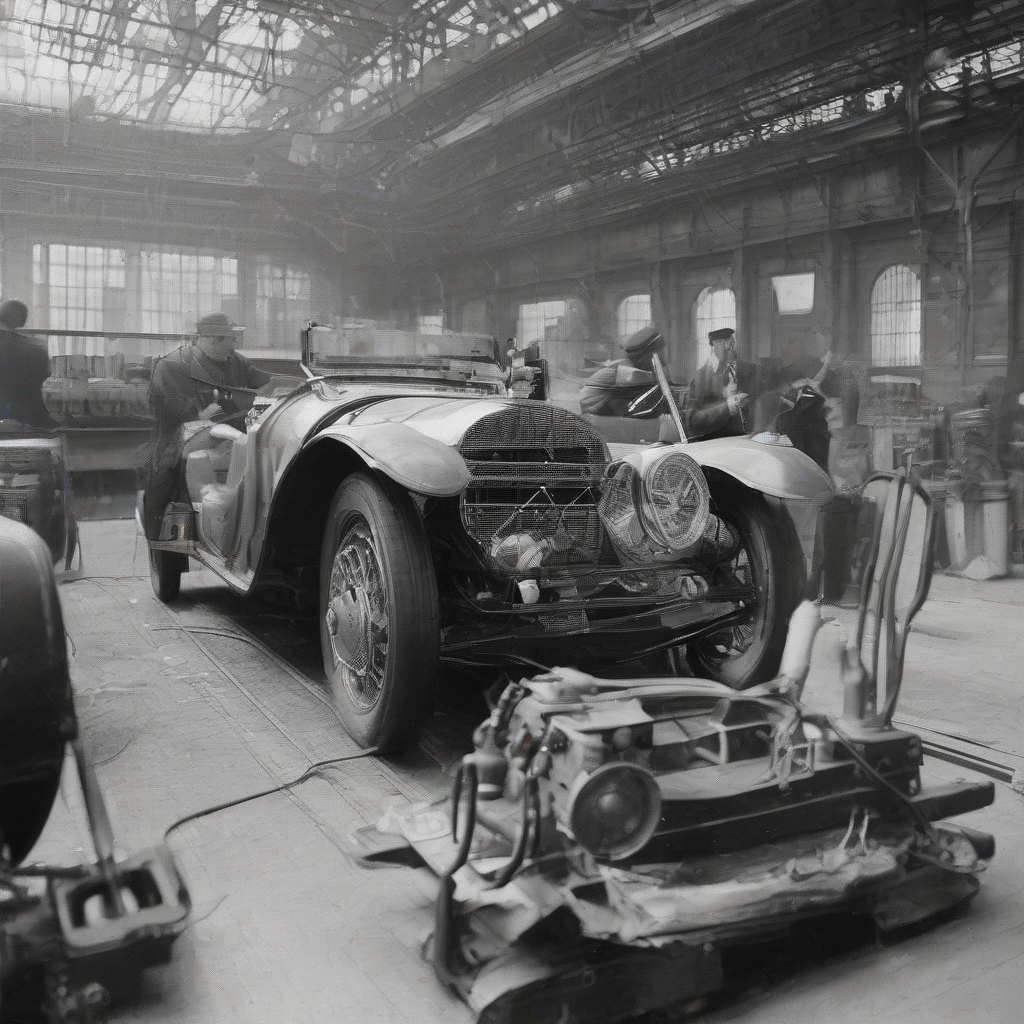Classic Auto Industries: A Deep Dive into the Resurgence of Vintage Vehicles
The classic car industry is experiencing a remarkable resurgence, fueled by a potent cocktail of nostalgia, investment potential, and a growing appreciation for craftsmanship and automotive history. This exploration delves into the multifaceted world of classic auto industries, examining its key players, the driving forces behind its growth, and the challenges it faces in the modern era.
The Allure of Classic Cars: More Than Just Transportation
The appeal of classic cars extends far beyond mere transportation. They represent a tangible connection to a bygone era, evoking memories and emotions linked to specific historical periods and cultural trends. For many owners, a classic car is a cherished possession, a symbol of personal achievement, and a testament to enduring style and engineering prowess. This emotional investment is a crucial factor driving the industry’s growth.
- Nostalgia and Personal Connection: The nostalgic appeal of classic cars resonates deeply with owners, connecting them to a specific time in their lives or the lives of their ancestors.
- Investment Potential: The value of certain classic cars has appreciated significantly over time, making them attractive investment assets. This has drawn investors and collectors to the market, driving up demand.
- Appreciation for Craftsmanship: Classic cars represent a level of craftsmanship and attention to detail rarely seen in modern mass-produced vehicles. This hand-built quality is highly prized by enthusiasts.
- Unique Identity and Self-Expression: Owning a classic car provides a unique identity, allowing owners to express their personal style and interests.
Key Players in the Classic Auto Industry
The classic auto industry encompasses a diverse range of players, each contributing to the overall ecosystem. These players include:
- Collectors and Enthusiasts: The driving force behind the industry, collectors and enthusiasts actively seek out, restore, and maintain classic vehicles.
- Restoration Shops and Specialists: Highly skilled professionals who specialize in restoring and maintaining classic cars, often possessing deep knowledge of specific makes and models.
- Parts Suppliers and Manufacturers: A crucial link in the chain, providing replacement parts and sometimes even manufacturing reproductions of discontinued components.
- Auction Houses: Play a pivotal role in facilitating the buying and selling of classic cars, often commanding substantial sums for rare and desirable models.
- Museums and Show Organizers: Contribute to the preservation and celebration of classic car history, showcasing vehicles and fostering a sense of community amongst enthusiasts.
- Clubs and Associations: Provide a platform for enthusiasts to connect, share knowledge, and participate in events related to their favorite classic car makes or models.
- Insurance Companies: Offer specialized insurance policies tailored to the unique needs of classic car owners, often incorporating provisions for agreed valuations and specific coverage for restoration work.
Growth Drivers and Market Trends
Several factors are driving the continued growth of the classic car market:
- Increasing Disposable Incomes: Rising affluence in certain regions enables more individuals to afford the cost of acquiring, maintaining, and insuring classic cars.
- Global Market Expansion: The classic car market is no longer limited to developed nations; emerging economies are increasingly seeing a rise in interest and participation.
- Technological Advancements in Restoration: New technologies and techniques have made restoration work more efficient and precise, improving the quality of restored vehicles.
- Online Marketplaces and Auctions: The internet has significantly expanded access to classic cars, connecting buyers and sellers globally and increasing market transparency.
- Media and Pop Culture Influence: Movies, television shows, and other media frequently showcase classic cars, increasing their visibility and desirability among younger generations.
- Shifting Investment Preferences: Some investors are increasingly turning to tangible assets like classic cars as a hedge against inflation and economic uncertainty.
Challenges Facing the Classic Auto Industry
Despite its remarkable growth, the classic car industry faces several challenges:
- Part Availability and Cost: Finding original or high-quality replacement parts can be difficult and expensive, particularly for rarer models.
- Skilled Labor Shortages: The specialized skills required for restoring and maintaining classic cars are becoming increasingly scarce.
- Environmental Regulations: Meeting increasingly stringent environmental regulations can present challenges for classic car owners and restoration shops.
- Authenticity and Provenance Concerns: Ensuring the authenticity and verifiable history of classic cars is crucial for maintaining their value, and verification can be complex.
- Market Volatility: While the overall market has shown upward trends, fluctuations in economic conditions and investor sentiment can impact the value of specific models.
- Insurance Costs: Insurance premiums for classic cars can be substantial, especially for high-value models.
- Storage and Maintenance Costs: Storing and maintaining classic cars requires specialized facilities and regular upkeep, which can be costly.
The Future of Classic Auto Industries
The future of the classic auto industry appears bright, driven by continued interest from collectors, investors, and enthusiasts. However, addressing the challenges related to part availability, skilled labor, and environmental regulations will be crucial for sustained growth. The increasing integration of technology, such as online marketplaces and advanced restoration techniques, will likely reshape the industry landscape in the years to come. The industry’s ability to balance its rich history with modern advancements will determine its continued success.
- Technological Integration: Continued development and adoption of technology will improve restoration processes, streamline market transactions, and enhance the overall enthusiast experience.
- Sustainability and Environmental Consciousness: The industry will need to adapt to stricter environmental regulations and incorporate more sustainable practices in restoration and maintenance.
- Focus on Education and Skill Development: Investing in training programs to develop skilled professionals will be crucial to address the shortage of qualified restorers and mechanics.
- Expanding Global Markets: Further expansion into emerging markets will drive growth and provide new opportunities for businesses within the industry.
- Preservation of Automotive Heritage: Continued efforts to preserve and document automotive history will be essential for maintaining the long-term value and significance of classic cars.
Conclusion (omitted as per instructions)
